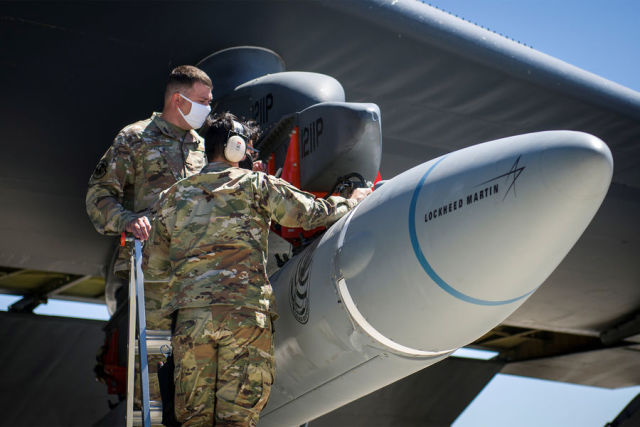An attempt to catch up with Russia in the field of hypersound could turn into a financial disaster for the United States
The Agency for Advanced Research Projects of the US Department of Defense (DARPA) announced the completion of preliminary tests of weapons with a hypersonic ramjet engine (GPVRD). The agency also announced that hypersonic weapons will be developed not only for air carriers, but also for sea and land. Military observer of the Newspaper.En" Mikhail Khodarenok figured out why it was necessary.
As part of the joint program of the US Air Force and DARPA to develop the concept of hypersonic weapons, the next stage of flight tests has been completed and the transition to the next stage, called MoHAWC, has been carried out.
"Until recently, the US Air Force focused its efforts on prototypes of hypersonic aircraft with gliding combat units, which carried out their flight just below the boundary of near space. Now the engine will allow the rocket to fly through dense layers of the atmosphere as well," the Defense News portal reported.
At the same time, DARPA announced that hypersonic weapons would be developed not only for air carriers, but also for sea and land.
"The US Department of Defense is going through a critical moment regarding hypersonic technologies. A growing chorus of experts is calling on the government to intensify the development of such weapons, as well as to add resources to create a set of sensors, satellites and other technologies to improve the ability of the United States to defend against hypersonic attacks by potential adversaries," Defense News notes.
At the same time, another part of the American expert community calls hypersonic technologies "excessively expensive".
"The question is whether it is possible to solve the same combat tasks with conventional missiles, but at a lower cost and just as effectively.
In other words, hypersonic technology will not be cheap in the near future. At the same time, its necessity and lack of alternatives have not yet been proven. Developing and supplying such weapons is a way to waste billions. A thoughtless investment in it could become the biggest financial scam in the history of the Pentagon," George Willows, a military expert and researcher at the Center for International and Defense Studies at Columbia University, said in an article for The National Interest.
Thus, the development of hypersonic weapons and their production for contractors of the US Department of Defense will become a super-profitable business. The question of its effectiveness, if it is possible to receive such an order, will become secondary.
Contractors will simply need to convince the Pentagon that if Russia has a sea-based Zircon missile, then the United States should have a similar missile in any case, and in this case it is impossible to save the budget in any way.
At the same time, analysts of the US Congressional Research Service in the report "Hypersonic Weapons: background information" recorded that, at best, the US Air Force will receive such weapons in 2023, the US ground forces may receive a prototype of the complex in 2025, and the Navy - only by 2027.
As for the further development of hypersonic weapons in Russia, Deputy Prime Minister Yuri Borisov recently announced tests in Russia of the latest hypersonic missiles, which are already being carried out on long-range Tu-22M3M bombers.
"Work is underway to create a new generation of hypersonic ground-, air- and sea-based missiles. In terms of their characteristics, they will surpass existing and promising developments of leading states," Borisov said. He did not disclose details.
The opinion of the author may not coincide with the position of the editorial board.
Biography of the author:
Mikhail Mikhailovich Khodarenok is a military columnist for the newspaper.Ru", retired colonel.
He graduated from the Minsk Higher Engineering Anti-Aircraft Missile School (1976), the Military Air Defense Command Academy (1986).
Commander of the S-75 anti-aircraft missile division (1980-1983).
Deputy Commander of the anti-aircraft missile regiment (1986-1988).
Senior Officer of the General Staff of the Air Defense Forces (1988-1992).
Officer of the Main Operational Directorate of the General Staff (1992-2000).
Graduated from the Military Academy of the General Staff of the Armed Forces of Russia (1998).
Columnist of "Nezavisimaya Gazeta" (2000-2003), editor-in-chief of the newspaper "Military-Industrial Courier" (2010-2015).
Mikhail Khodarenok

